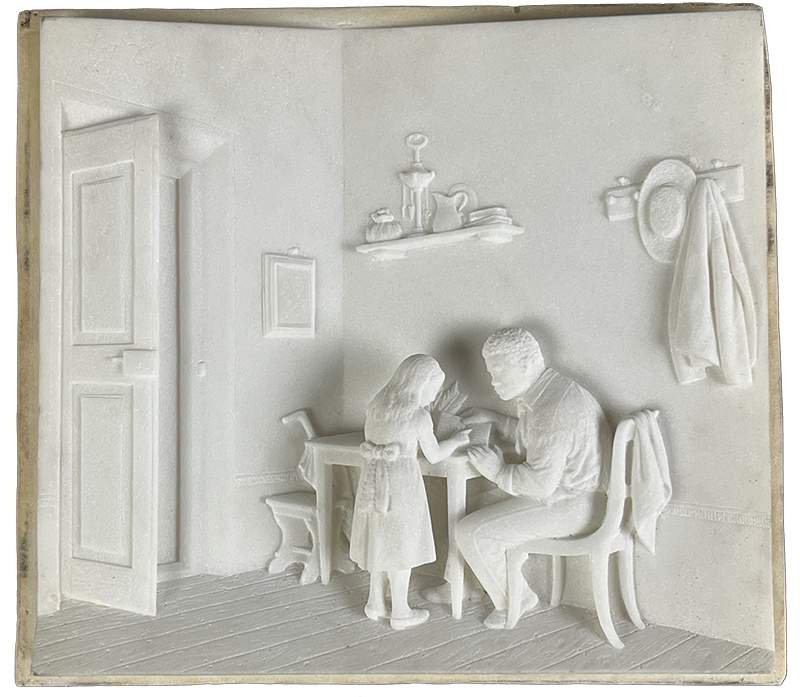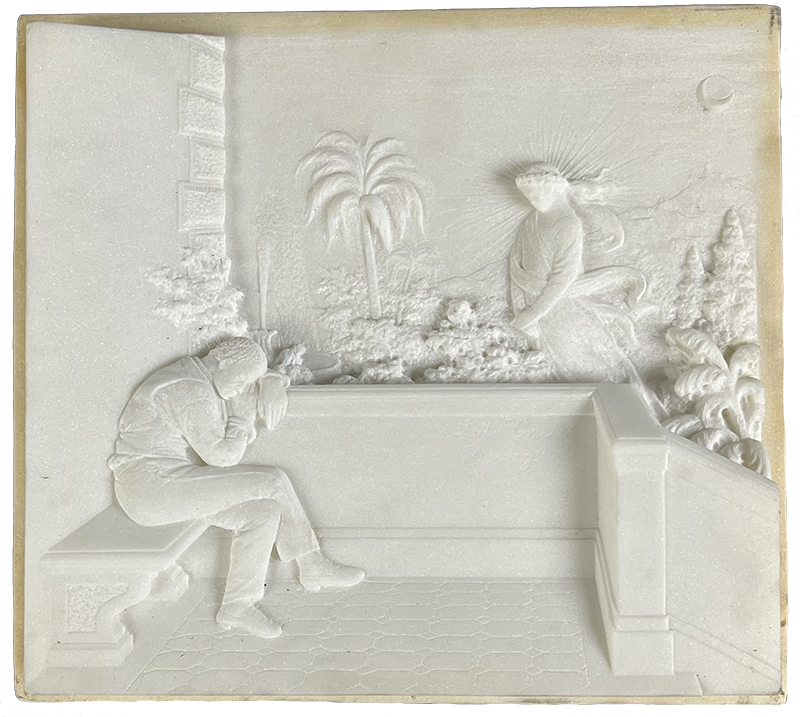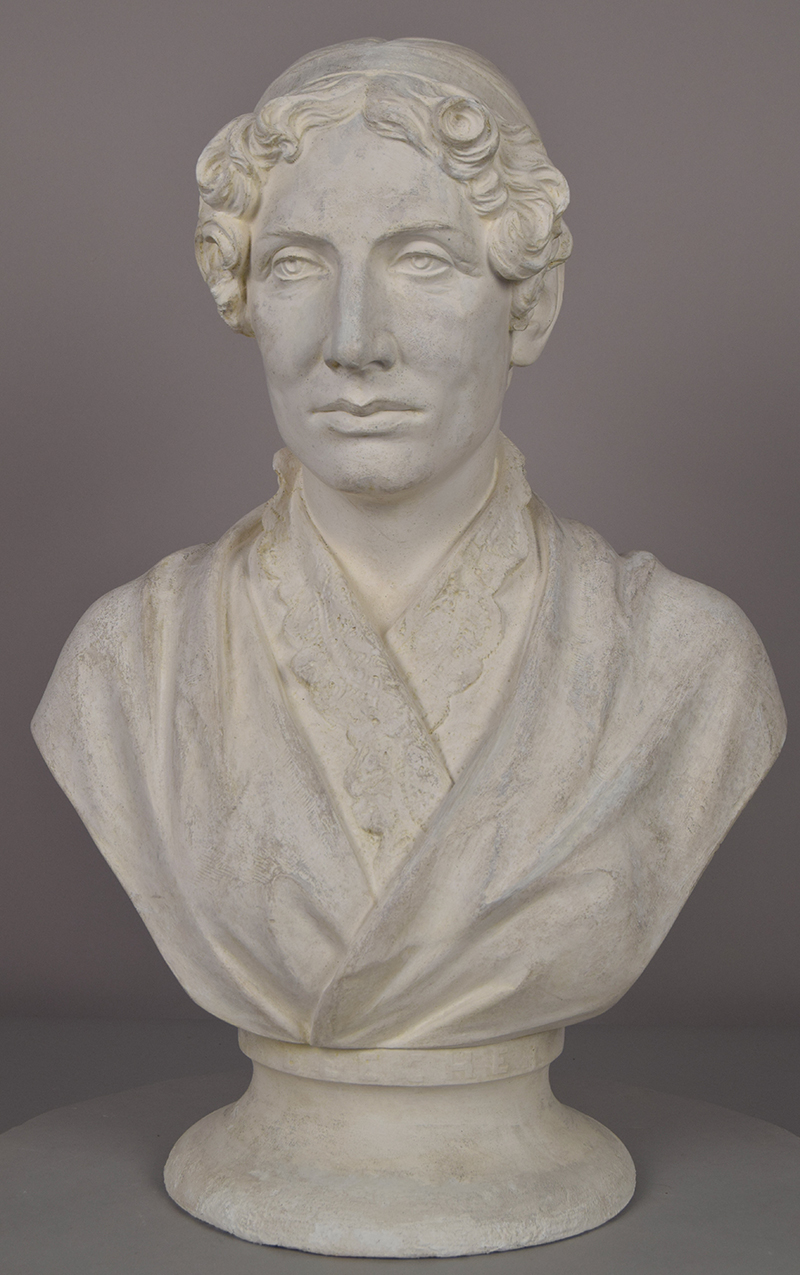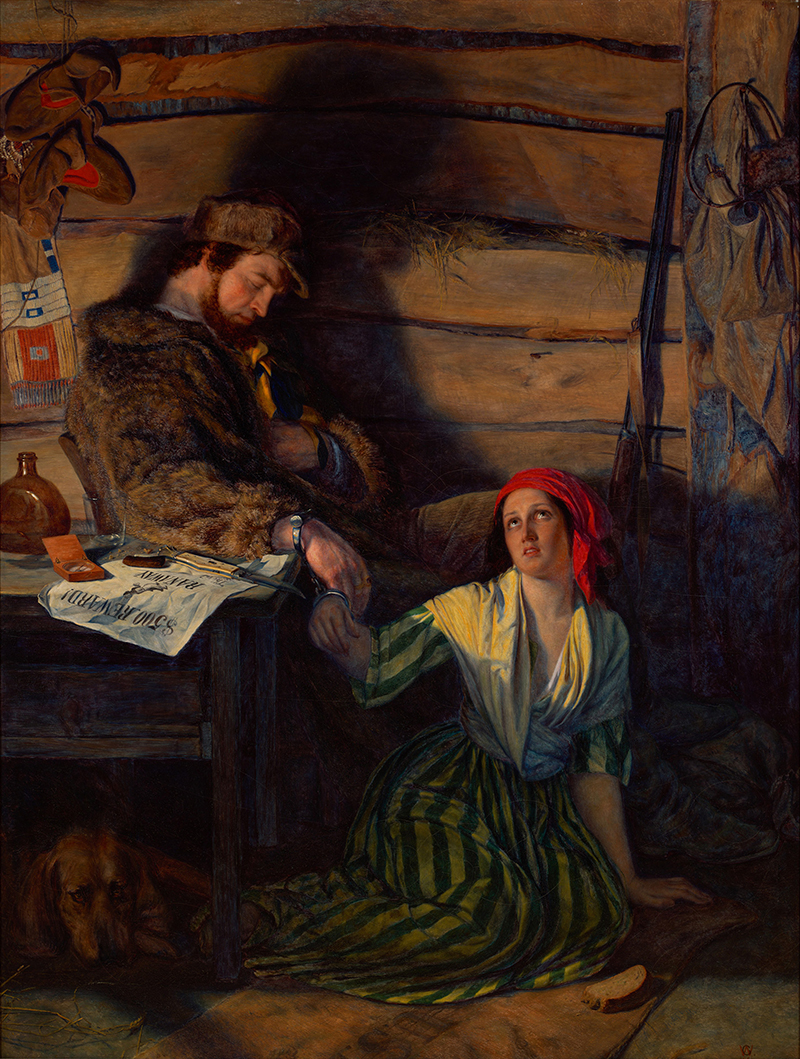Dates:
Location:
Markell GallerySelected Works

Relief depicting scene from Uncle Tom’s Cabin, ca. 1870s, marble by Lot Torelli. Bowdoin College Museum of Art, Museum Purchase, Laura T. and John H. Halford Jr. Art Acquisition Fund, 2022.26.1

Relief depicting scene from Uncle Tom’s Cabin, ca. 1870s, marble by Lot Torelli. Bowdoin College Museum of Art, Museum Purchase, Laura T. and John H. Halford Jr. Art Acquisition Fund, 2022.26.2

Harriet Beecher Stowe, 1893, plaster bust by Anne Whitney. Bowdoin College Museum of Art, Museum Purchase, Lloyd O. and Marjorie Strong Coulter Fund, 2022.27

The Captured Runaway, 1856, oil on canvas by William Gale. Bowdoin College Museum of Art, Museum Purchase, Jane H. and Charles E. Parker Jr. Art Acquisition Fund, 2021.48
About
“The Book of Two Hemispheres” highlights the dynamic visual culture that arose in response to the most famous American anti-slavery novel of its era and arguably of all time: Uncle Tom’s Cabin by Harriet Beecher Stowe. A wide array of imagery in different media, produced both in the United States and Europe, testifies to the book’s powerful impact and to Stowe’s own international celebrity. Yet, these pictorial responses also reveal conflicting ideologies pertaining to racial difference, ideals of liberty, and Christian doctrine, which sometimes failed to translate across social and cultural contexts. Since its publication in 1852, Stowe’s passionate condemnation of slavery has polarized audiences. The novel received both strong support and strong criticism in its own time, was condemned by authors and activists in the mid-twentieth century, and has undergone reevaluation by scholars in the twenty-first. This exhibition probes the volume’s complicated legacy, examining how the text and the visual interpretations it inspired reshaped conceptions of chattel slavery in the United States for publics on both sides of the Atlantic.
Read the exhibition labels here.
Programming
Enjoy this recording of Caitlin Beach, Assistant Professor of Art History at Fordham University, Affiliated Faculty in African & African American Studies and interim co-director (2023-24) of the Asian American Studies Program at Fordham University, New York City, as she delivers a lecture centered on artist Edmonia Lewis.
In the 1860s, the sculptor Edmonia Lewis created a series of plaster statuettes depicting abolitionists, public figures, and Civil War soldiers including John Brown, William H. Carney, Robert Gould Shaw, and others. This talk considers how these works—which have often gone overlooked in Lewis’ career and histories of American sculpture—played a vital role in networks of Black women’s craft, entrepreneurship, and activism in wartime Boston.
Caitlin Beach, Bowdoin Class of 2010, is the author of "Sculpture at the Ends of Slavery" (University of California Press, 2022), which was a recipient of the 35th Charles C. Eldredge Prize for Distinguished Scholarship in American Art from the Smithsonian American Art Museum and The Phillips Book Prize from the Phillips Collection and the University of Maryland.
Presented by the Bowdoin College Museum of Art in conjunction with the exhibition “The Book of Two Hemispheres: 'Uncle Tom’s Cabin' in the United States and Europe” (on view through July 21, 2024).
Recorded on February 8, 2024 at Bowdoin College, Brunswick, Maine.

